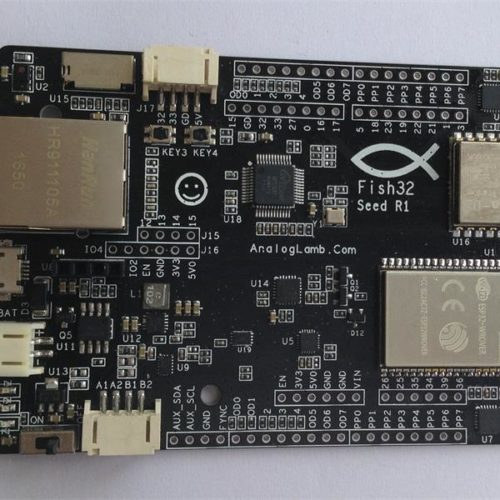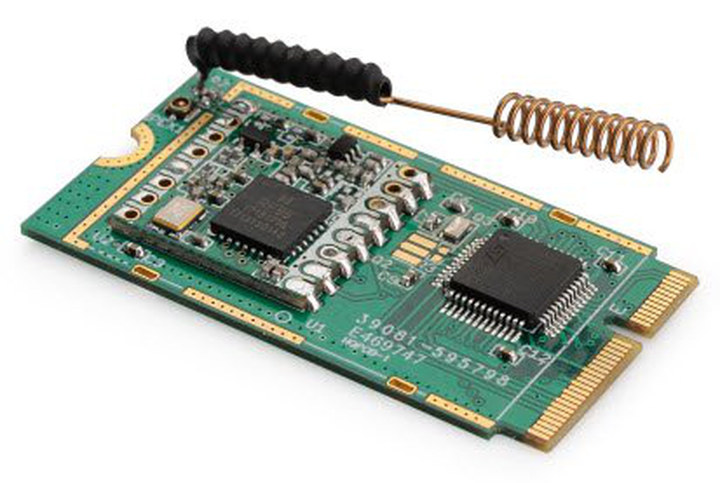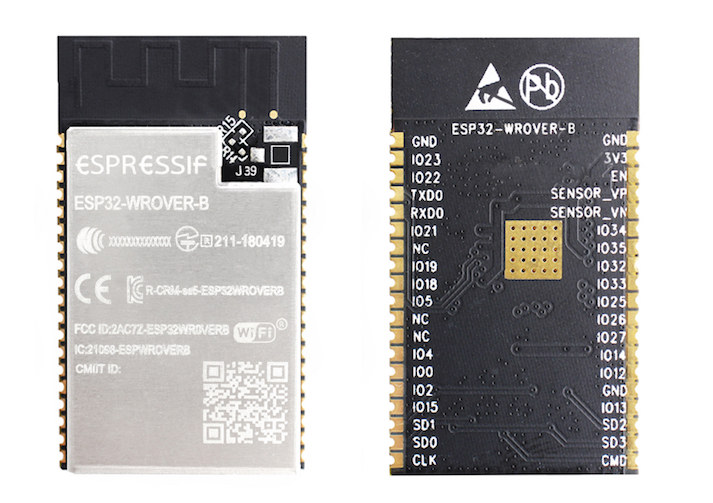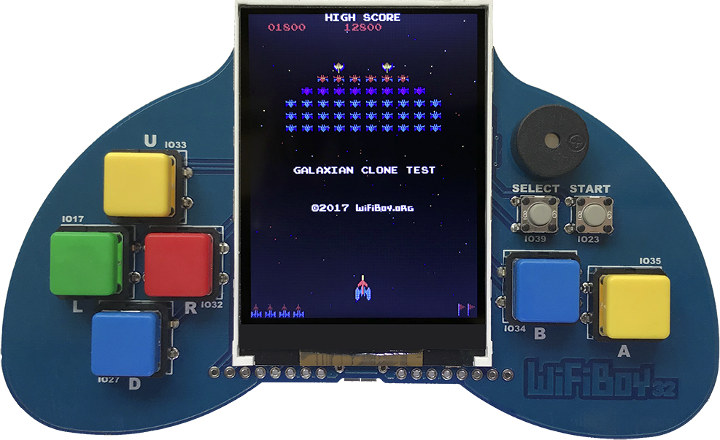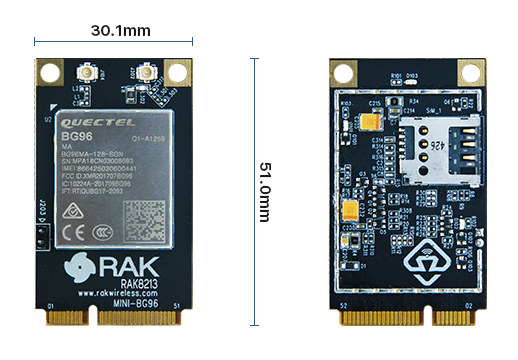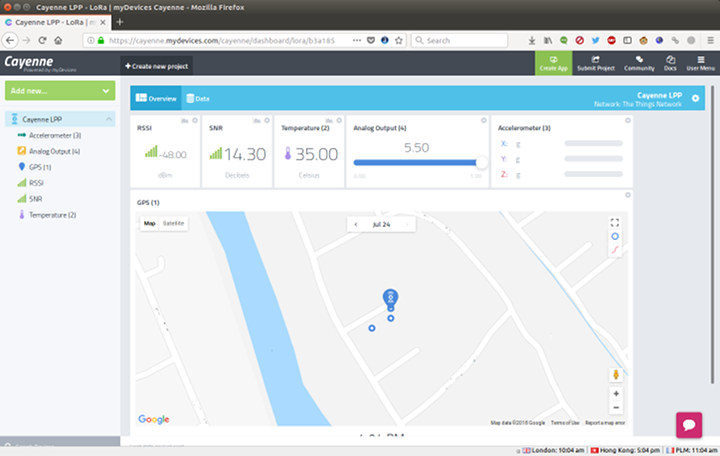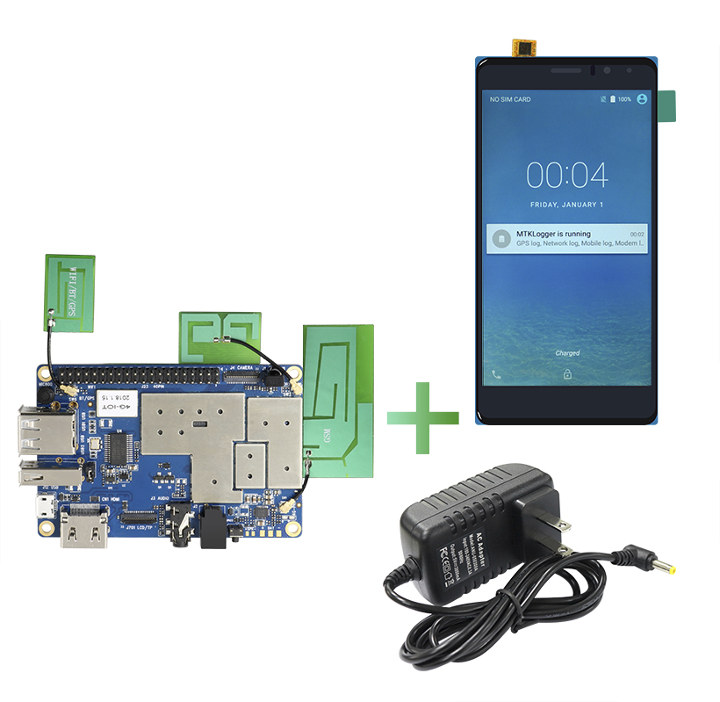The Embedded Linux Conference & OpenIoT Summit 2018 took place in March of this year in the US, but the European version of the events are now planned to take place on October 21-24 in Edinburg, UK, and the schedule has already been released. So let’s make a virtual schedule to find out more about some of interesting subjects that are covered at the conferences. The conference and summit really only officially start on Monday 22, but there are a few talks on Sunday afternoon too. Sunday, October 21 13:30 – 15:15 – Tutorial: Introduction to Quantum Computing Using Qiskit – Ali Javadi-Abhari, IBM Qiskit is a comprehensive open-source tool for quantum computation. From simple demonstrations of quantum mechanical effects to complicated algorithms for solving problems in AI and chemistry, Qiskit allows users to build and run programs on quantum computers of today. Qiskit is built with modularity and extensibility […]
$50 Fish32 Seed “Education” ESP32 Board Comes with Plenty of I/Os, Sensors, and Connectivity Options
Sometimes I feel the word “Education” is sometimes thrown around for marketing purpose, and AnalogLamb Fish32 Seed board for “ESP32 Community Education Board” feels that way to me as so far, I could not see any tutorials or other teaching/ learning resources for the board. Having said that I can see why it could be potentially used for education: the sheer number of features, sensors, and connectivity options should allow students to learn to program my different components around ESP32. It’s just at this stage it may not be such an easy platform to learn on. Fish32 Seed board specifications: Supported ESP32 Modules – ESP32-WROVER, ALB32-WROVER, ESP32-WROOM-32 Connectivity 802.11 b/g/n WiFi and Bluetooth 4.2 via ESP32 10/100M Ethernet (RJ45) via WIZnet W5500 chip with support for up to 8 independent sockets LoRa via SX1278 chip (433 MHz) Sensors NXP MPU-9250 with 3-axis MEMS gyroscope, 3-axis MEMS accelerometer, 3-axis MEMS magnetometer […]
Dragino LoRaST M.2 LoRa Card Convert Compatible Platforms into LoRa Nodes
Modern motherboards or single board computers often expose mPCIe or M.2 / NGFF socket, and we’ve seen it was possible to easily add a LoRa radio using RAK833 mPCIe LoRaWAN gateway card to hardware with an mPCIe (USB/SPI) socket. You can now do something similar with Dragino LoRaST M.2 LoRa card by inserting into a spare M.2 / NGFF socket. There’s an important distinction however, as while RAK833 is designed for LoRa gateways, LoRaST is based on SX1276/SX1278 for LoRa end nodes. Dragino LoRaST M.2 LoRa card specifications: MCU – STMicro STM32L072CZT6 Arm Cortex M0+ MCU @ 32 MHz with 192 KB flash, 20 KB of RAM, 6 KB data EEPROM LoRa Connectivity Semtech SX1276/78 LoRa Wireless Modem Available Bands – 433/868/915/920 Mhz Built-in antenna or optional external antenna via I-PEX connector Host interface – Standard M.2 (NGFF) interface Supply Voltage – 1.8V ~ 3.6V Dimensions – 22 x 42 […]
Espressif Introduces ESP32-WROVER-B Module with 8MB RAM
ESP32 processor can support PSRAM, and so far I had seen boards or modules with up to 4MB RAM, but if you need more memory, Espressif Systems has now launched ESP32-WROVER-B module with 8MB SPI PSRAM. ESP32-WROVER-B module specifications: WiSoC – Espressif ESP32-D0WD with dual core processor up to 240 Mhz; 5x5mm package Connectivity 2.4GHz WiFi 802.11 b/g/n up to 150 Mbps Bluetooth 4.2 LE Two antenna designs: PCB antenna or IPEX connector External Memory – 8MB SPI Pseudo Static RAM (PSRAM) Storage – 4MB external SPI flash I/Os – Capacitive touch, SD card interface, Ethernet, SPI, UART, I2S, I2C, GPIOs, VP/VN, etc… Power Supply – 2.7 to 3.6V Dimensions – 31.4 x 18.0 x 3.3 mm Certifications – FCC/CE-RED/IC/TELEC/KCC/SRRC/NCC ESP32-WROVER-B should be software compatible with other ESP32 modules. It works ESP-IDF framework based on FreeRTOS with LwIP ( light-weight Internet Protocol). TLS 1.2 hardware acceleration is built-in, and secure OTA […]
WiFiBoy32 is an ESP32 Portable Game Console and IoT Devkit
I’ve noticed that ever since Hardkernel launched their ODROID-GO “10th anniversary” portable game console based on ESP32 processor, most of the talk on IRC and social media is about this new toy, and people almost seem to have forgotten about the company’s Arm Linux boards 🙂 But recently, I’ve come across a somewhat similar ESP32 device called WiFiBoy32 that acts as both a portable game console and an IoT development kit. WiFIBoy32 specifications: Wireless module – ESP32-WROOM-32 wireless module with 802.11 b/g/n WiFi and Bluetooth 4.2 LE connectivity Display – 2.4″ 240×320 color SPI TFT LCD display Expansion – 2x 8-pin through holes with GPIOs, SPI, DAC, I2S,ADC, VP/VN, and power signals (3.3V, Vin, GND) Misc Top – 6x large gaming buttons, select and start push buttons, buzzer Bottom – PROG and RESET buttons, user LED USB – 1x micro USB port for power and programming (CP2102) Dimensions – 120 […]
RAK8213 mini PCIe Card Comes with GNSS, NB-IoT & eMTC Connectivity
After launching their first wireless communication mini PCIe card with RAK833 LoRaWAN gateway card last month, RAK Wireless is back with another mPCIe card that supports GNSS (GPS, GLONASS), as well as cellular IoT connectivity thanks to Quectel BG96 NB-IoT + LTE Cat M1 module. RAK8213 mini PCIe card specifications: Wireless Connectivity Module – Quectel BG96 with LTE Cat. M1 (eMTC), LTE Cat. NB1 (NB-IoT), EGPRS, and GNSS Global bands support FDD-LTE – B1/ B2/ B3/ B4/ B5/ B8/ B12/ B13/ B18/ B19/ B20/ B26/ B28 TDD-LTE – B39 (for Cat M1 only) EGPRS – 850/900/1800/1900Mhz Max Data Rate – Cat M1: 375 kbps (UL/DL); Cat NB1: 32 kbps DK, 70 kbps (UL) micro SIM slot u.FL connectors for cellular and GNSS mPCIe connector with USB 2.0, I2C, UART, and PCM Misc – LEDs for network and power status Dimensions – 51 x 30.1 mm The card can be added […]
AS923 LoRa GPS Tracking with MatchX MatchBox Gateway and RAK811 LoRa GPS Tracker Board
Earlier this month, I installed Match MatchBox LoRa outdoor gateway close to the roof, and showed how easy it was easies to setup with MatchX Cloud. Basically, you just register to the cloud, enter the serial number, and the gateway is automatically based on your location. I’m in South East Asia, so the gateway was configured with AS923. I’ve now had time to play with the gateway using Rak Wireless RAK811 LoRa tracker board, and eventually managed to get the tracker location to show up on a map. It was my first experience with LoRaWAN, and I had to learn a lot, and overcome many issues from outdated software development tools, different data formats, and some interoperability issues between all components involved. I’ll document all that in this review, and hopefully it will help others. RAK811 LoRa GPS Tracker Unboxing Before going into LoRa configuration, I’ll show what I got […]
Orange Pi 3G/4G Cellular IoT Development Kits with Touchscreen Display Launched for $35 and Up
Earlier this year, Shenzhen Xunlong introduced two new Orange Pi cellular IoT boards running Android – but no Linux distribution just yet – with Orange Pi 3G-IoT and Orange Pi 4G-IoT boards, with LTE bands suitable for Asia and most part of Europe, but not the US. But boards are quite cheap, the 4G-IoT model recently got Android 8.1 Oreo support, if you’d like a display with the board, you can now buy various kits with touchscreen display and in some sets a power supply as well for $34.80 and up plus shipping, or the displays only for $14.80 and up. Four kits have been launched so far: $34.80 Orange Pi 3G-IoT-A Set1 with Orange Pi 3G-IOT-A board powered by Mediatek MT6572 dual core Cortex A7 processor + 256MB RAM/512MB eMMC combo chip, and a 4.98″ TFT LCD touchscreen display (854 x 480) $39.80 Orange Pi 3G-IoT-B Set1 with Orange […]



